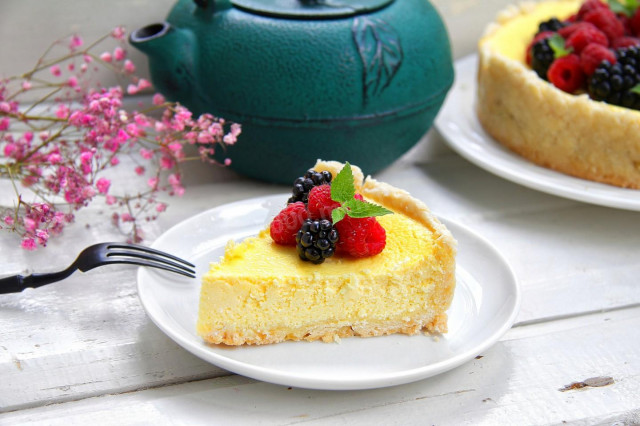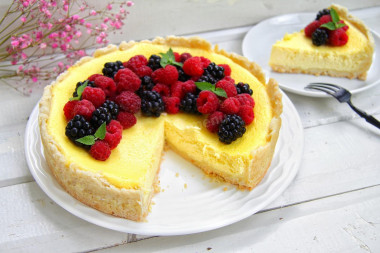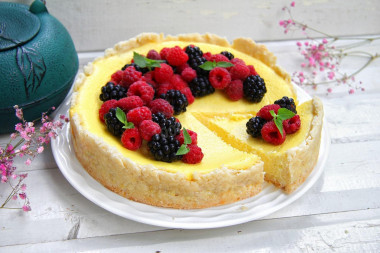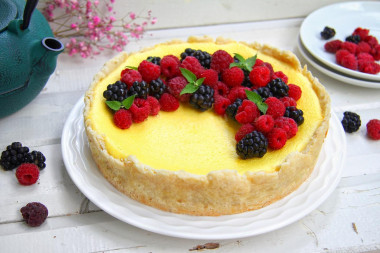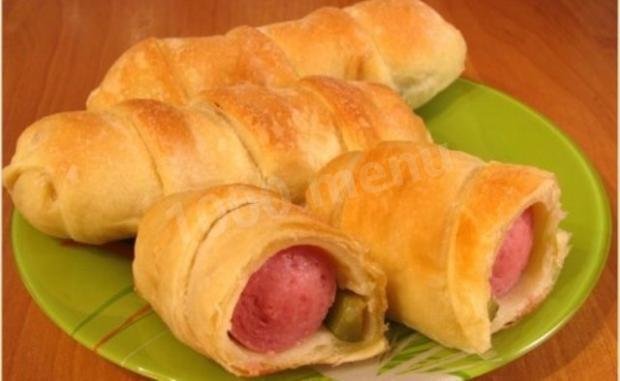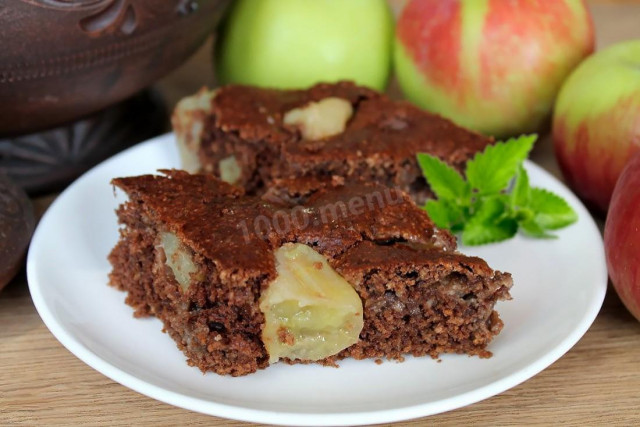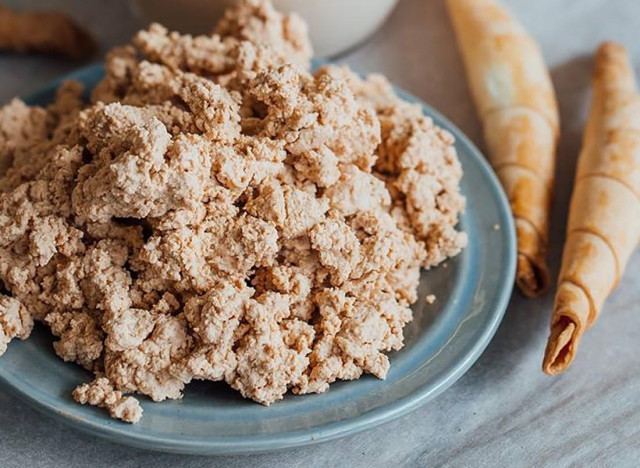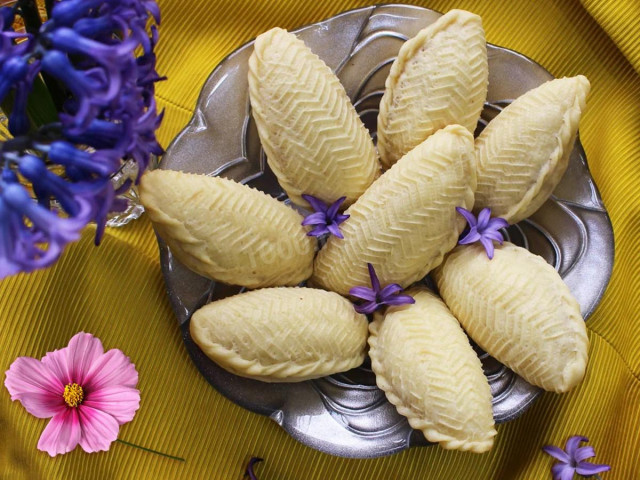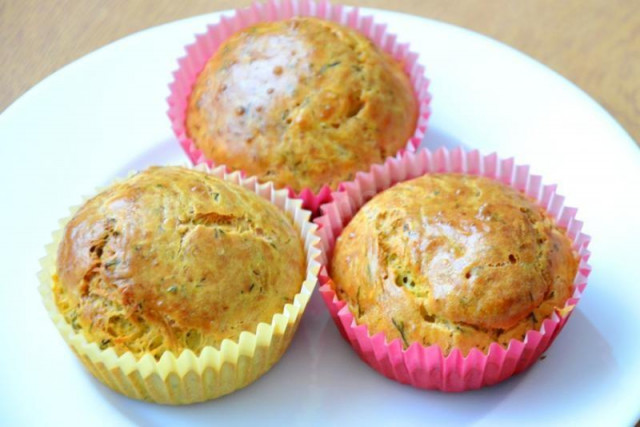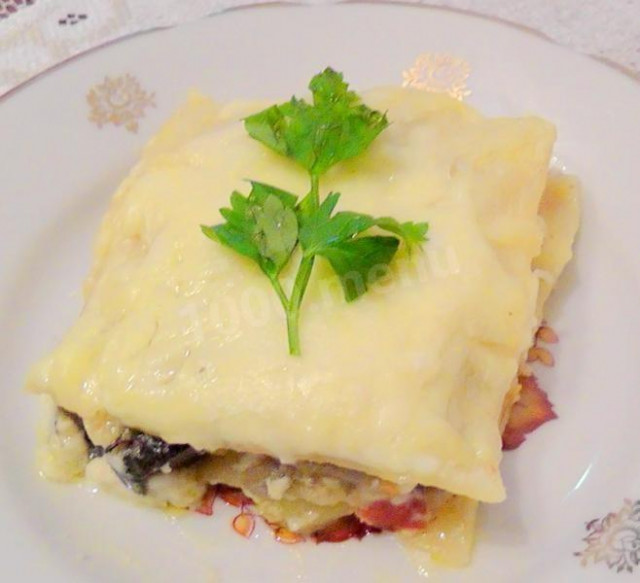Composition / ingredients
Step-by-step cooking
Step 1:
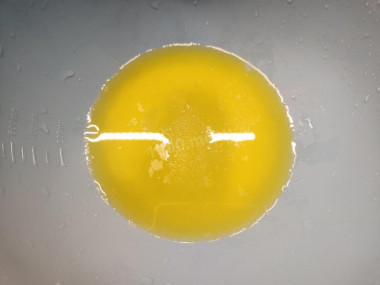
If you have your own, proven recipe for shortbread dough, feel free to cook it. I'm still searching, so I melted butter in the microwave and mixed it with a whisk with sugar and salt.
Step 2:
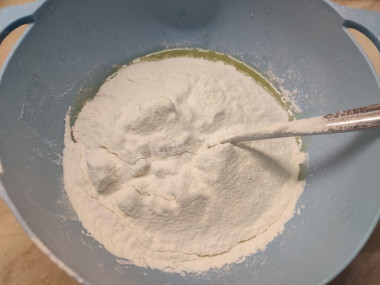
Add water and sift the premium wheat flour in parts.
Step 3:
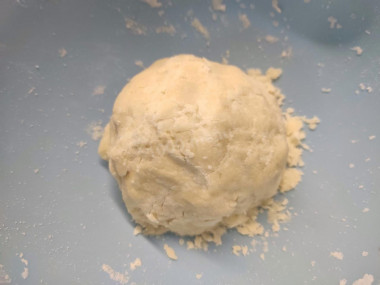
Knead the tight dough, assemble it into a ball and, tightening the bowl with cling film, put it in the refrigerator for half an hour.
Step 4:
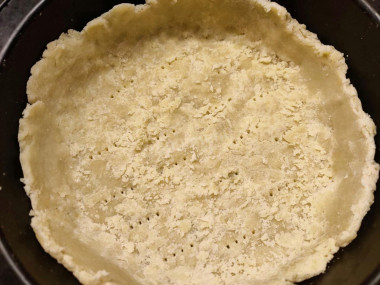
Turn on the oven to warm up to 180 °C. Roll out the dough into a circle with a diameter larger than the size of the mold. I got a circle with a diameter of 26 cm: 18 cm - the inner part, and the sides of 4 cm. The form is silicone. The bottom was pre-lubricated with sunflower oil. Prick the cake with a fork. Bake the cake in the oven for 20 minutes. If this is not done, then the dough in the pie is almost guaranteed to be raw.
Step 5:
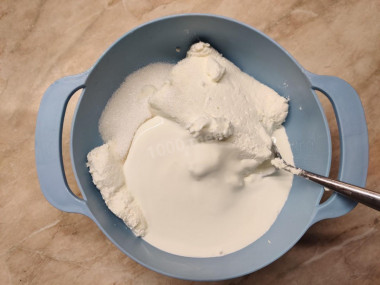
For the filling, put the cottage cheese and sour cream in a bowl. Add sugar and vanilla sugar.
Step 6:
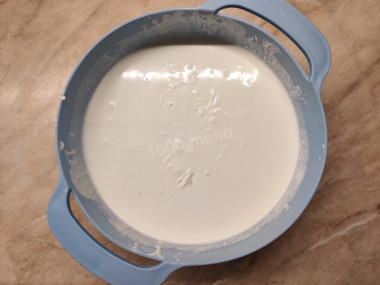
Using an immersion blender, whisk the mixture until smooth. Instead of a blender, you can pre-grind the cottage cheese through a sieve, and then mix with sour cream and sugar.
Step 7:
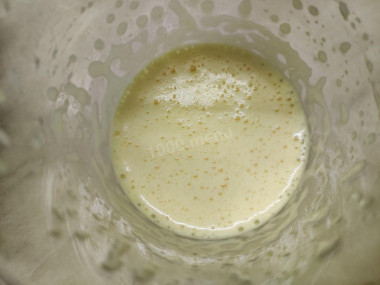
Beat the eggs with a mixer until a slight increase in volume and the appearance of abundant bubbles.
Step 8:
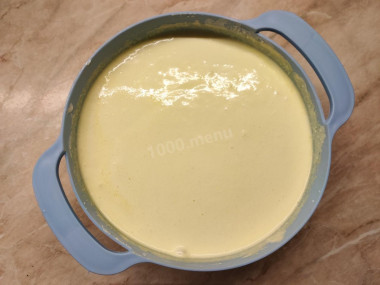
Gently stir the eggs into the curd mixture with a cooking spatula.
Step 9:
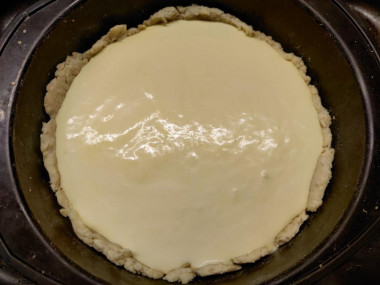
Then pour the filling into the mold, onto the cake, and bake for 40 minutes at 180 ° C. The filling should stabilize. Keep an eye on the pie: if the top is slightly cracked, it means it's ready, 100%. But it's better not to bring it to this :)
A good and very satisfying pie. Before serving, decorate it with fresh berries as your imagination suggests.
Due to the use of a blender, the filling is homogeneous and tender, slightly sour from sour cream.
Bon appetit!
Be sure to wash the eggs before use, as even the seemingly clean shell may contain harmful bacteria. It is best to use food detergents and a brush.
Be prepared for the fact that flour may need more or less than indicated in the recipe. Focus not on the amount of flour, but on the desired consistency of the dough. To avoid mistakes, read about flour and its properties!
Keep in mind that everyone's ovens are different. The temperature and cooking time may differ from those specified in the recipe. To make the dish successful, use useful information about the features of ovens !
Caloric content of the products possible in the composition of the dish
- Sour cream with 30 % fat content - 340 kcal/100g
- Sour cream of 25 % fat content - 284 kcal/100g
- Sour cream with 20 % fat content - 210 kcal/100g
- Sour cream of 10 % fat content - 115 kcal/100g
- Sour cream - 210 kcal/100g
- Chicken egg - 157 kcal/100g
- Egg white - 45 kcal/100g
- Egg powder - 542 kcal/100g
- Egg yolk - 352 kcal/100g
- Ostrich egg - 118 kcal/100g
- Cottage cheese of 40% fat content - 466 kcal/100g
- Cottage cheese of 20% fat content - 233 kcal/100g
- Cottage cheese of 18% fat content - 226 kcal/100g
- Cottage cheese of 10% fat content - 156 kcal/100g
- Low-fat cottage cheese - 75 kcal/100g
- Cottage cheese with sour cream - 260 kcal/100g
- Fruit cottage cheese - 147 kcal/100g
- Soft dietary cottage cheese - 170 kcal/100g
- Vitalinia cottage cheese - 64 kcal/100g
- Cottage cheese "morning" ( "danone") without sugar - 91 kcal/100g
- Cottage cheese - 156 kcal/100g
- Granulated sugar - 398 kcal/100g
- Sugar - 398 kcal/100g
- Butter 82% - 734 kcal/100g
- Amateur unsalted butter - 709 kcal/100g
- Unsalted peasant butter - 661 kcal/100g
- Peasant salted butter - 652 kcal/100g
- Melted butter - 869 kcal/100g
- Salt - 0 kcal/100g
- Water - 0 kcal/100g
- Wheat flour - 325 kcal/100g
- Sunflower oil - 898 kcal/100g
- Refined sunflower oil - 899 kcal/100g
- Vanilla sugar - 379 kcal/100g

